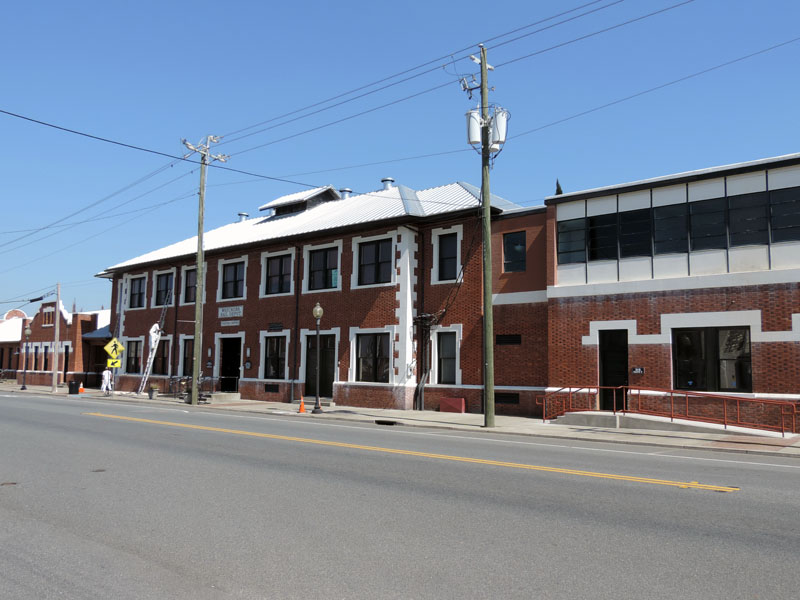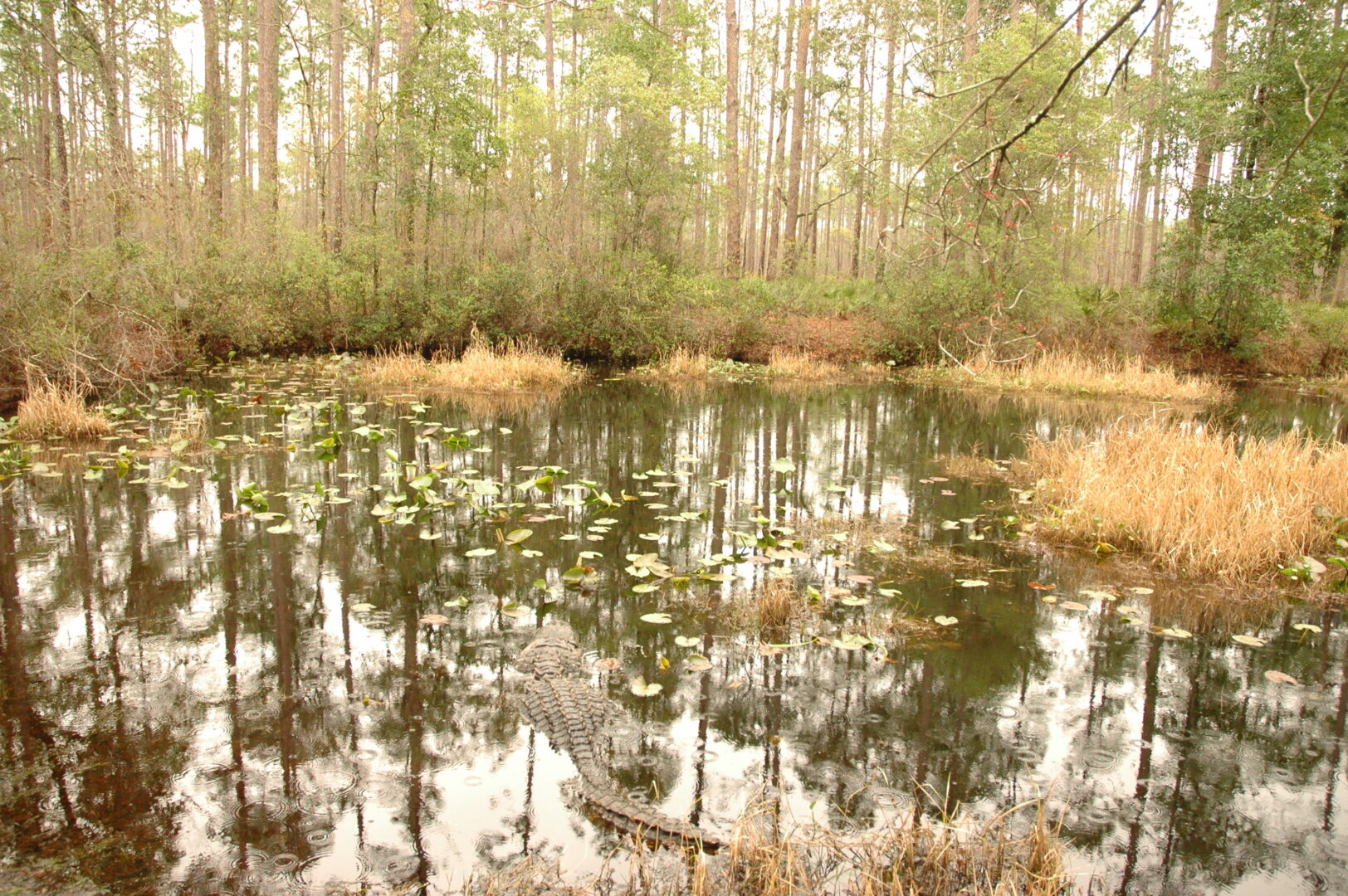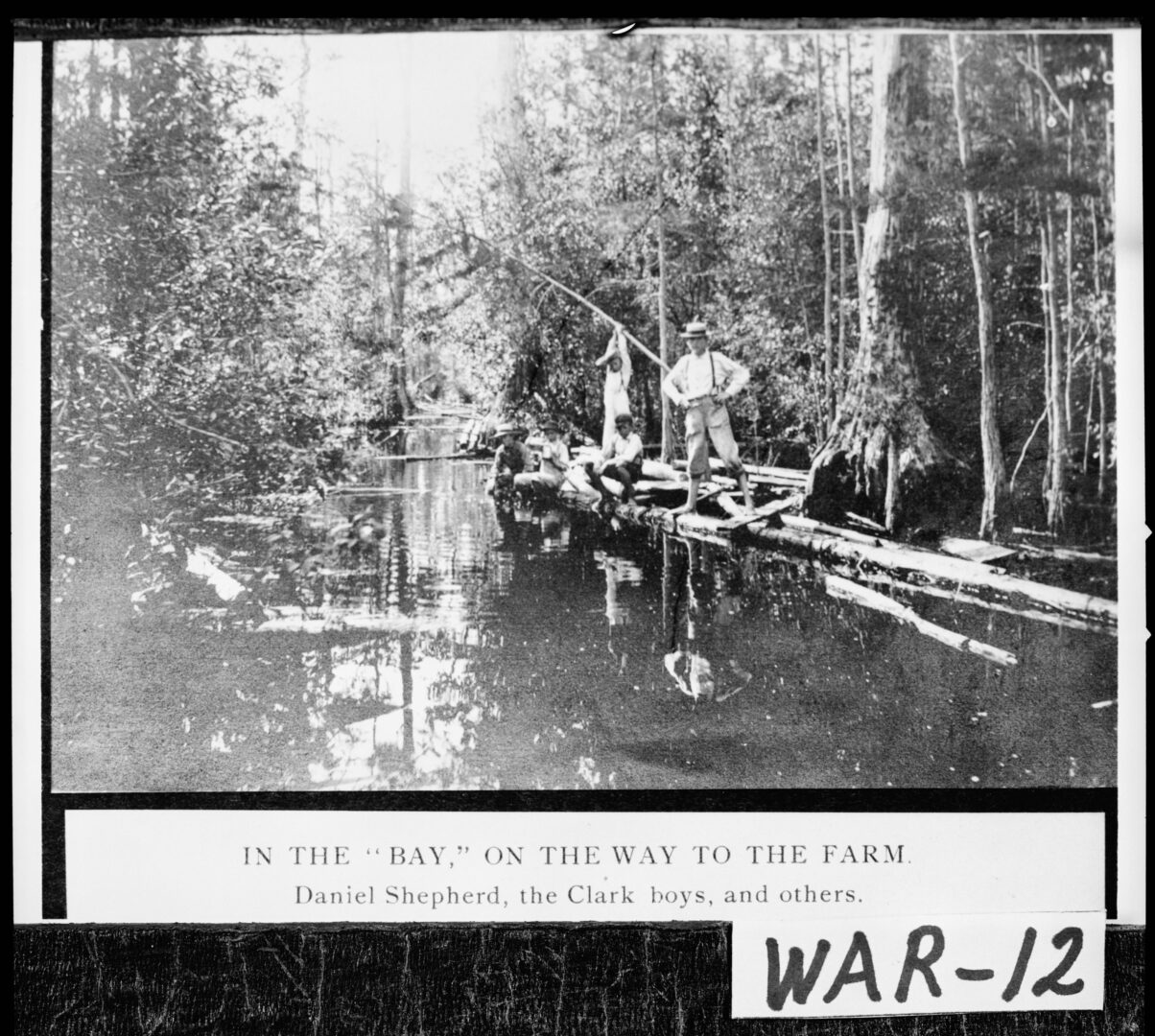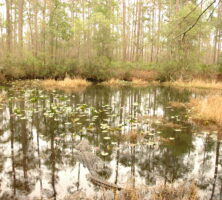Ware County, in extreme southeast Georgia, was formed when Appling County was divided by the state legislature on December 15, 1824. It was named for a man who never visited the area, Nicholas Ware, an active politician known for his flamboyant lifestyle. The lower portion of the county forms a major part of the Okefenokee Swamp. Waycross, the county seat, is about 100 miles northwest of Jacksonville, Florida.
The defining of county lines did not stop conflict with the Native Americans, who resented the crossing of old borders, regardless of any treaties. The Wildes Massacre, the last slaughter by the Indians in Georgia, occurred in Ware County in 1838, during the Second Seminole War. Nine people were killed by a group of Creek warriors, who escaped into the vast Okefenokee Swamp.
One of Ware County’s borders is the Satilla River, which in the mid- to late 1800s became a busy locale for rafting yellow longleaf pine to sawmills on the coast. The Okefenokee Swamp offered cypress trees, and the famed Hebardville Cypress Mill, considered the largest such operation in the world at its peak period, also underscored this area as a timber cutter’s paradise. Unique here at the turn of the century was the narrow-gauge railroad that snaked its way from Ware County’s Hebardville to Billys Island in the Okefenokee, transporting cut cypress to the mill.

Ware County was known as a place where trails and roads met, the reason for Waycross’s name. The Indian paths along which many early roads were cut headed toward Trader’s Hill, Coleraine, and Camp Pinckney on the St. Marys River, or to Burnt Fort on the Satilla. Later, the stagecoach would find one of its major relay stations at Peter Bedford’s Tavern in the county seat of Waresboro. The county’s position as a transportation hub continued to strengthen with the coming of the railroad and the 1874 formation of Waycross, which became the new county seat.
Contributing to the county’s educational growth are Waycross College and Okefenokee Technical College, which offer, besides their regular curricula, various programs beneficial to everyone in the community. Southern Forest World, the Okefenokee Heritage Center, the Okefenokee Swamp Park, and Obediah’s Okefenok also offer both educational programs and entertainment for the public and tourists.
The Downtown Waycross Development Authority has successfully encouraged new businesses to come into the once flourishing downtown. Phase I of the new Trembling Earth Recreation Complex has turned into Phase II, with Phase III of the Ware County plan waiting in the wings. Ware County is known as southeast Georgia’s regional retail center, and many buyers come daily from the surrounding counties to make purchases. With this growth in both the city and county, new buildings and plants are on the drawing boards for expansion in what is still called “This Magic Wilderness.”

According to the U.S. census the county population in 2020 was 36,251. The county encompasses 903 square miles.
Ware County has had a number of famous residents known for achievement in the arts: Caroline Miller, who won the Pulitzer Prize for her novel Lamb in His Bosom; actors Pernell Roberts and Ossie Davis; and musician Gram Parsons.













